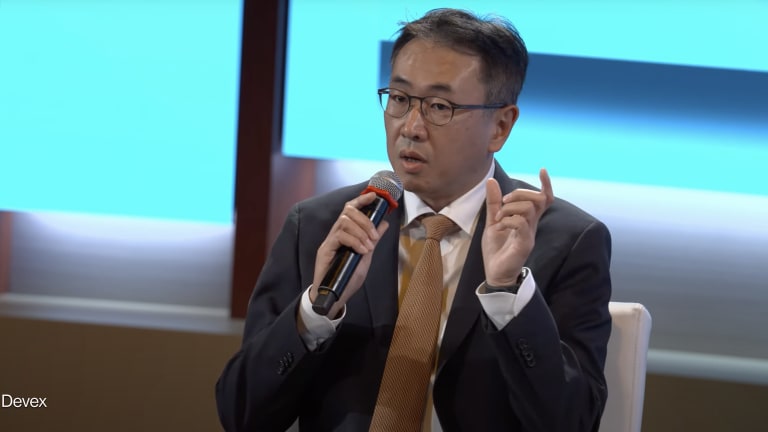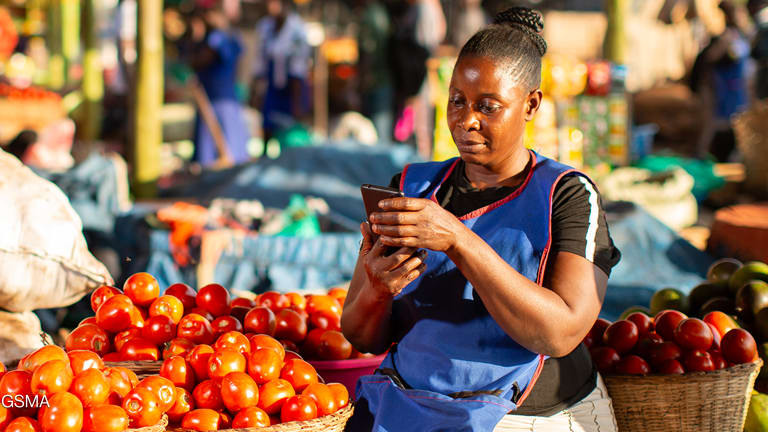
Connect everyone by 2030. This beautifully audacious goal set forth by the U.N. Secretary-General, António Guterres, in the 2020 Roadmap for Digital Cooperation highlights the critical nature of digital inclusion for accomplishing many, if not most, of the 2030 Sustainable Development Goals. The past 18 months of the global pandemic have both heightened our clarity around this imperative, and also shown how far we have to go in achieving it.
5 ways to ensure the digital future doesn't leave people behind
Cina Lawson, Togo’s minister of digital economy and transformation, was one of several leaders who offered ways to ensure the digital future doesn’t leave people behind at last week's Sustainable Development Impact Summit.
“During the pandemic, digital technologies have kept societies functioning and people connected. But, the pandemic has also highlighted a yawning gap in access to these tools, including vast gender disparities,” Guterres told the U.N. General Assembly at an informal briefing held at the start of the year. “Our aim is for people everywhere to have affordable, meaningful and safe access to the Internet by 2030."
In the case of older persons, the digital divide is particularly stark, especially in the face of a growing segment of the population that over-indexes on being “disconnected.” By 2050, over 20% of the world’s population will be over 60 years old, a three-fold increase from 2000. Today, far less than half of those older adults are online, and the percentage decreases significantly as age increases. Add to that equation the projection that nearly 8 in 10 of the world’s older persons will be living in low- or middle-income regions, where digital infrastructure often has even more barriers to overcome.
Reaching this goal of digital inclusion for older persons will require a broad coalition of stakeholders. Member states, civil society groups, the private sector, and other stakeholders must come together to address the most critical issues that impede the ability of older persons to get online. In particular, we need to address:
• Availability, access, and affordability of high speed, low-cost internet and connected devices;
• Digital literacy education for older persons; and
• Digital accessibility and inclusive design of devices and experiences.
Finally, we need clear metrics and goals — for countries and companies — to measure both our successes on the journey and to quickly reroute us when detours arise.
Digital literacy is a subset of a broader issue of lifelong learning, which is typically deprioritized in education policy and solutions.
—On Sept. 22, 2021, AARP and Devex held an ecosystem conversation convening experts across these four areas including Tom Kamber, executive director of Older Adults Technology Services, Matthias von Schwanenflügel, director general of the Division of Demographic Change for Older People and Welfare in Germany's Federal Ministry of Family Affairs, Senior Citizens, Women and Youth; Frances West, founder of FrancesWestCo and former chief accessibility officer at IBM; and Lourdes Montenegro, lead of digital sector transformation at the World Benchmarking Alliance.
The aim was to begin to dive into solutions and jump-start the conversation on overcoming barriers to digital inclusion for older persons. Here are some of the key insights from the conversation:
1. The digital access gap may only get bigger if action isn’t taken
Infrastructure and access to high-speed, low-cost internet — along with affordable devices — continues to be an issue, especially for older adults. As we continue to see improvements in bandwidth speed and device capabilities, that gap may be exacerbated if we don’t create forward-looking solutions.
In addition, as we focus our work on older persons, we have to always keep intersectionalities in mind. Gender, geography, socioeconomic status, and so on are differences that make a difference. There may also be many solutions across the ecosystem to getting older adults access, but how do we bring them together in a less fragmented way in order to make getting connected easier for older adults?
2. Digital literacy must be a part of the broader lifelong learning agenda
Digital literacy is a subset of a broader issue of lifelong learning, which is typically deprioritized in education policy and solutions. In order to improve digital education and training for older adults, we need to address this broader issue.
To do this, we should look for solutions in the not-so-usual spaces. For example, intergenerational efforts that bring younger and older persons together could help generate new ways of learning and other programs where we could “piggyback” digital literacy and connectedness efforts could provide an effective way of reaching more people.
3. Digital accessibility means looking through the lens of inclusivity
When it comes to connectivity, we have to break down the perspective of older adults as “other” or the subsection of the population to be addressed at a later stage. We need to have a “human first” and more age-inclusive approach to thinking about design and accessibility.
How can technology help close the gender gap in financial inclusion?
Women could have either the most to gain or the most to lose as digital tools open up new opportunities for access to credit.
We may consider digital inclusion a “human right.” If it is, and this argument has been adeptly made by others, how would that change our approach to creating standing and mandating inclusive design with older people in mind?
Relatedly, we may need to examine more tactical and practical solutions like user experience and inclusive interface design standards, along with broader best practices for the product and service development process. The U.N. recently commissioned a digital accessibility primer which is a great initial step in this area but more such guidance could be helpful.
We should also look across the technology opportunity landscape to identify ways to “leap over” design barriers. This could include leveraging voice recognition for older persons instead of relying on web interfaces.
4. Measuring success is vital
Finally, and critically, we must keep businesses, governments, etc. accountable to outcomes around digital inclusion and measure that accordingly. This is a particular challenge on the access front because of “data deserts” on connectivity around the world. That said, we are seeing some great initiatives from the private sector, which we hope will include older persons as a key constituent in the near future.
We also need testing and validation as part of the inclusive design and product development process. We have to iteratively and formatively be able to assess success, especially with the fast pace of digital development.
The path forward
There is much collective work to be done in order to convene the necessary stakeholders and conversations around solutions, and advocate for those changes with government, business, and civil society.
AARP pledges to take a leadership role in this effort, supporting the new U.N. Office of the Secretary-General’s Envoy on Technology in bringing together organizations and institutions with the goals of sharing best practices in policy, programs, and products that increase digital access, literacy, accessibility, and use; creating sustainable solutions for reducing digital inequities for older persons; and benchmarking and measuring our path towards digital inclusion.
To join our effort moving forward, find out more at AARP International.








